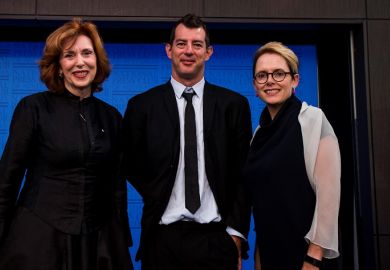Australia’s regional universities have crunched the numbers on their own economic contribution as they crank up a campaign to make the government think more strategically about non-metropolitan education ahead of the federal budget.
Modelling commissioned by the Regional Universities Network has concluded that its six member institutions add A$1.7 billion (£920 million) to the value of the goods and services produced in their regions. They are also big spenders, injecting A$1.6 billion into their communities while their students shell out an additional A$480 million.
The figures were compiled by consultants Nous Group and the Centre of Policy Studies at Victoria University in Melbourne. The researchers also found that about seven out of 10 employed RUN graduates worked in regional Australia, compared with 23 per cent of students from the country’s other universities.
Greg Hill, RUN chairman, said that the findings underlined the role of regional universities in overcoming local skill shortages and nurturing population growth. “Providing more opportunities and courses for students in the regions will grow regional economies,” said Professor Hill, who leads the University of the Sunshine Coast.
The modelling has emerged as regional universities confront an increasingly uncertain future. They say that they have been disproportionately hurt by a freeze on university teaching grants, imposed just before Christmas, because they are more reliant than metropolitan universities on government funding.
The freeze in effect ended Australia’s demand-driven higher education system well before demand had been soaked up in the regions. “We still have only half the university attainment rate compared with major cities,” said Caroline Perkins, RUN executive director.
While the government has stressed that it will not revoke the freeze, RUN wants to help shape the performance metrics expected to guide the allocation of teaching grants when funding growth resumes in 2020.
Dr Perkins said that the metrics were expected to include factors such as completion rates and employment outcomes. “We would like the measures to take into account the broader contributions to the region,” she said, adding that traditional indicators such as attrition rates could further disadvantage regional universities where non-completion was relatively high. “We’re dealing with a lot of first-in-family students with financial issues.”
RUN also supports calls for a strategy for regional higher education – an idea recently backed by former education bureaucrat John Halsey, who was commissioned by the federal government to review regional and remote education.
While the government has not formally responded to Dr Halsey’s 11 recommendations, there is speculation that it may do so in the federal budget on 8 May. Independent MP Cathy McGowan has also proposed a regional higher education strategy in a private member’s bill.
Australia’s recently appointed deputy prime minister, Michael McCormack, also focused attention on regional tertiary education in an April address to the National Press Club in Canberra.
“Research shows that if you train someone locally, chances are their skills – as a teacher, an accountant, a cabinet-maker, you name it – will stay local,” he said.
Mr McCormack’s remarks gave heart to Charles Sturt and La Trobe universities, which jointly propose a rurally based medical school to ease a shortage of doctors in the bush.
Critics say that the idea is expensive and unnecessary. According to research published this week in the journal Medical Education, trainee doctors are up to five times more likely to end up working in rural areas if they have lengthy clinical placements in the regions.
Register to continue
Why register?
- Registration is free and only takes a moment
- Once registered, you can read 3 articles a month
- Sign up for our newsletter
Subscribe
Or subscribe for unlimited access to:
- Unlimited access to news, views, insights & reviews
- Digital editions
- Digital access to THE’s university and college rankings analysis
Already registered or a current subscriber?








